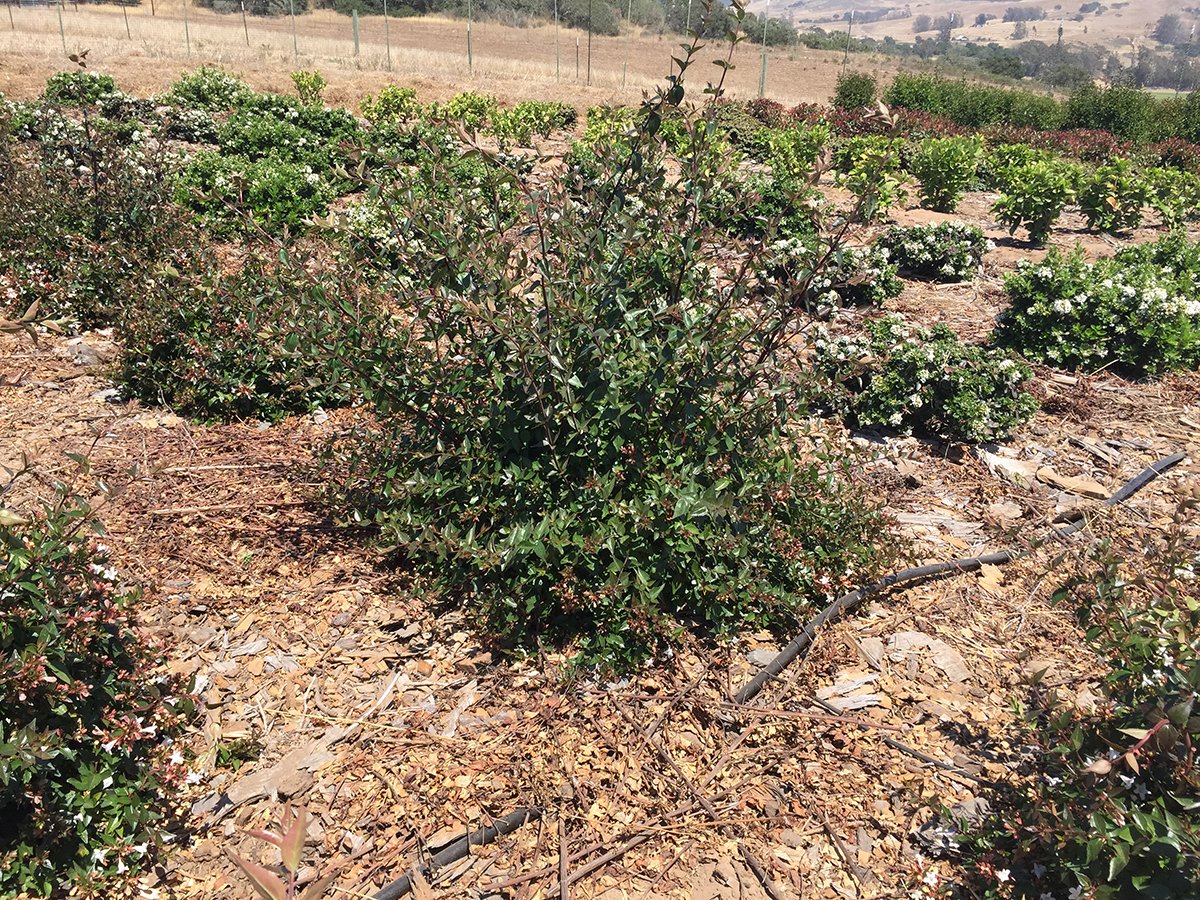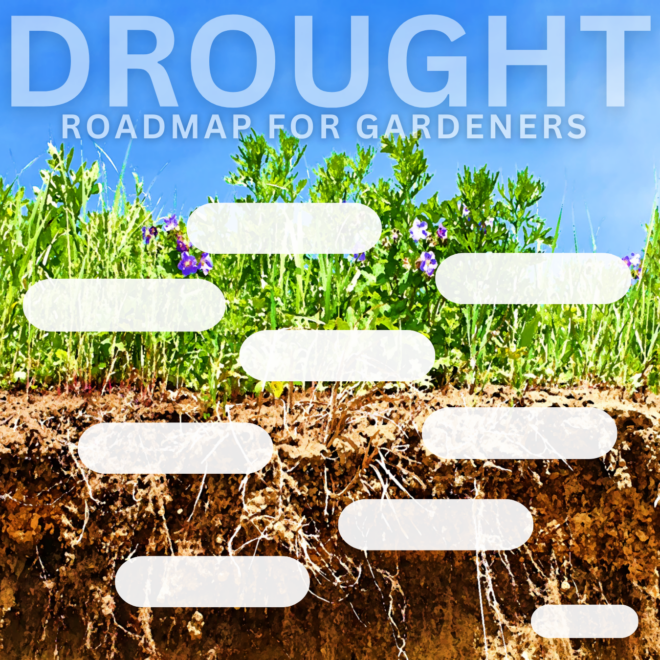
Drought Roadmap for Gardeners

Contributor
- Topics: Drought and Fire Resilience
Spring 2023
The Drought Roadmap aims to go after every drop, knowing that not every drop is obvious.
The value of gardens and landscapes to the environment—including sequestering carbon, supporting wildlife, and fostering our own well-being in the process—is priceless. In addition to water use itself, soil health, plant selection, landscape design, installation practices, and landscape maintenance all contribute to keeping our landscapes efficient and resilient and conserving water.
INTRODUCTION
With drought often in the headlines, and the threat (the reality for some) of inadequate water supply, it’s easy to focus on how individual sites use water as part of the drought equation and look for more ways to not water our landscapes. There is a lot of pressure on landscapes and households to conserve, but their needs are a fraction of water use overall. The value of gardens and landscapes to the environment—including sequestering carbon, supporting wildlife, and fostering our own well-being in the process—is priceless. In addition to water use itself, soil health, plant selection, landscape design, installation practices, and landscape maintenance all contribute to keeping our landscapes efficient and resilient and conserving water. Water running off a site and down the storm drain is obviously wasteful. What is less easily observed is the myriad of ways we fail to make the most of what we’ve got.


On the non-landscape side, water is lost through leaks in delivery systems, stolen, used in manufacturing. Water is interdependent with all parts of energy production and electricity generation. The landscape industry alone can’t fix our water crises. Even though the water you drink today will find its way back to being rain, along with the water I apply to my garden, there is not enough coming back down to replace what we use. The hydrologic cycle can’t keep up.
It’s a matter of rate; we use water faster than the hydrologic cycle recharges it. Too much of what we receive from the weather winds up running off first, and then becomes floodwater, too little infiltrating into the soil and refilling aquifers. Thanks in part to too much paving, compacted soils, and other impermeable surfaces, a lot of rainfall cannot infiltrate into the soil like Mother Nature intended. Likewise, irrigation efficiency is only one part of water conservation—you can only get so efficient. Irrigation solutions to the water problem are important, but not going to do the trick by themselves. Planting choices alone aren’t going to get us there, either.
There are many aspects to this drought discussion. We’ve divided this guide into several sections including but not limited to soil, irrigation, hydrozoning, plant selection, design, and maintenance. Our guide on drought aims to go after every drop, knowing that not every drop is obvious.
CLICK ON THE TOPICS IN THE IMAGE BELOW TO EXPLORE EACH SECTION
The thing is, with a whole spate of approaches, and understanding of a few synergies around water, we can do a lot better. We do not intend to merely hand out advice. There is enough “do this, not that” information out there, but little of it is specific or contributes enough context for critical thinking. A lot of the advice is relatively generic so that it can appeal to the most people. Not all advice is advisable for everyone, and some could be damaging if misunderstood or used inappropriately.
Every garden and every gardener is different; we have different soils, site conditions, preferences, skills, resources, and bandwidth. So how do you make informed decisions that are specific to your mix of circumstances? Hopefully, by learning about the reasoning and synergies behind the options. Even within the professional landscape industry—the landscape architects, designers, contractors, and gardeners—there are vastly different opinions on what the best practices are within each of these topics. With that in mind, we aim to outline a practical level of understanding that will help you apply new understanding to your landscape and make informed decisions. Even if we didn’t specifically say what to do under your circumstances, hopefully you’ll be able to discern what works best for all your various eccentricities.
Join us in looking at the synergies surrounding water conservation primarily through our horticultural lens. This guide on drought is a living document and will grow, becoming ever more resilient as it gets more established.












Responses